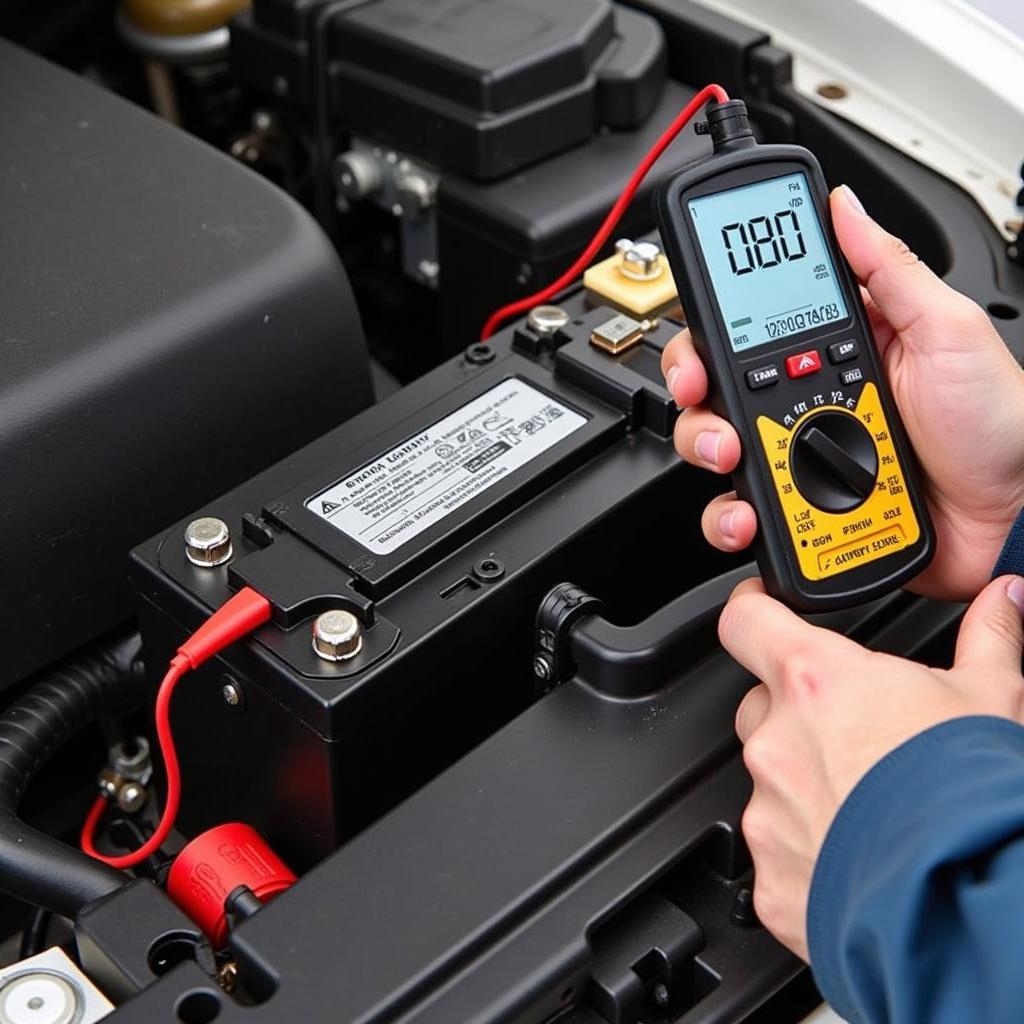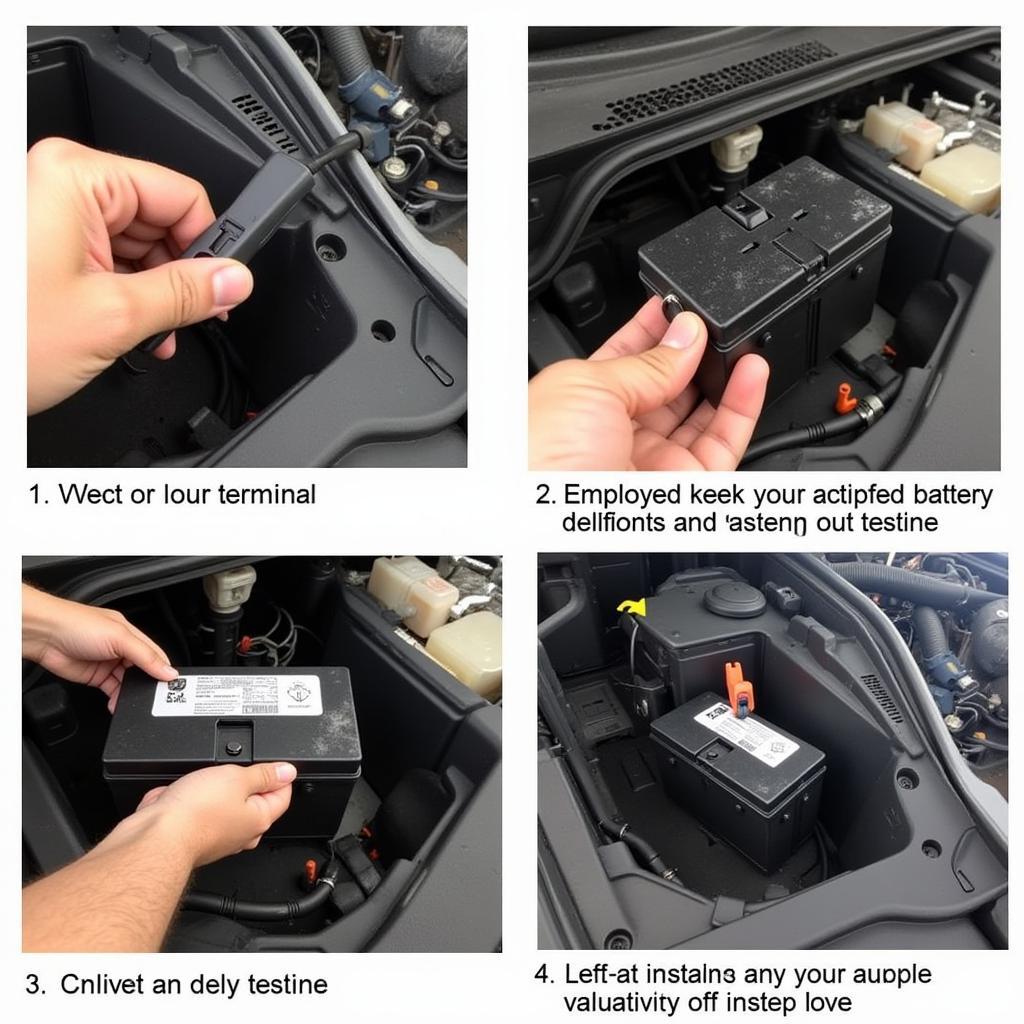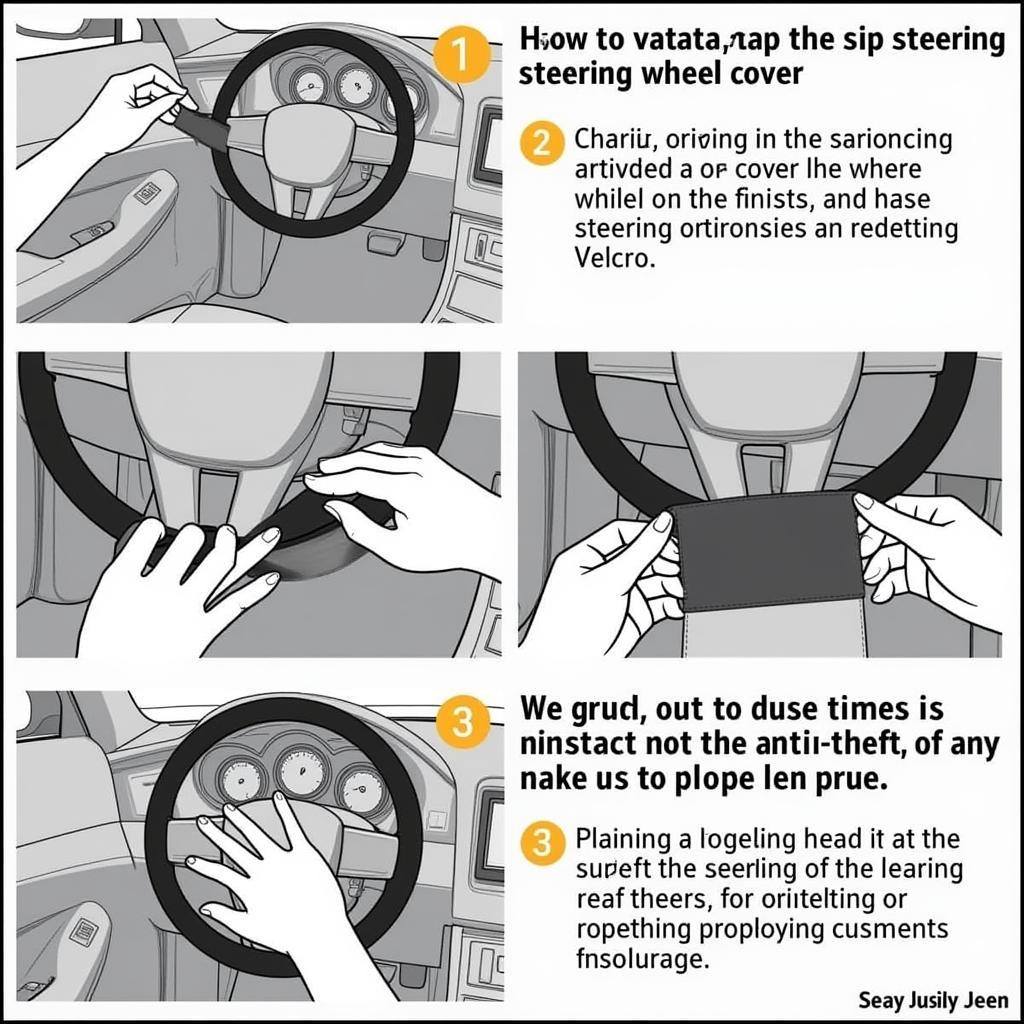Dodge Journey battery problems can be a real headache, leaving you stranded and frustrated. Whether you’re dealing with a dead battery, slow cranking, or flickering lights, understanding the potential causes and solutions is crucial. This guide provides a deep dive into common Dodge Journey battery issues, offering practical advice and expert insights to get you back on the road.
Common Dodge Journey Battery Problems
Dodge Journeys, like any vehicle, can experience a range of battery-related issues. These problems can manifest in various ways, from a complete failure to start to more subtle symptoms. Some of the most frequently reported problems include:
- Dead Battery: This is the most obvious sign of a battery problem. Your Journey won’t start, and you’ll likely hear a clicking sound when you turn the key.
- Slow Cranking: The engine cranks slowly when you try to start it, indicating a weakened battery.
- Dimming Lights: Headlights and interior lights may dim, especially when using accessories like the radio or air conditioning.
- Flickering Dashboard Lights: Intermittent flickering of dashboard lights can signal a failing battery or charging system issue.
- Clicking Noises: Rapid clicking noises when attempting to start the car often point to a dead battery.
- Electrical System Malfunctions: Problems with power windows, locks, or other electrical components can sometimes stem from battery issues.
2010 dodge journey battery problems
Why is My Dodge Journey Battery Dying?
Several factors can contribute to Dodge Journey battery problems. Understanding these causes can help you diagnose and resolve the issue effectively.
Age and Wear
Batteries have a limited lifespan, typically around 3-5 years. As a battery ages, its internal components degrade, reducing its ability to hold a charge.
Parasitic Drain
Even when the car is off, certain electrical systems can continue to draw power, slowly draining the battery. This is known as a parasitic drain. Common culprits include faulty interior lights, door switches, or even aftermarket accessories.
 Testing a Dodge Journey Battery
Testing a Dodge Journey Battery
Extreme Temperatures
Both extreme heat and cold can negatively impact battery performance. Heat can accelerate the chemical reactions within the battery, leading to faster degradation. Cold temperatures can reduce the battery’s capacity to deliver power.
Charging System Issues
A malfunctioning alternator or voltage regulator can prevent the battery from charging properly, leading to premature failure.
2014 dodge journey battery problems
Troubleshooting Dodge Journey Battery Problems
Testing the Battery
Use a multimeter to check the battery’s voltage. A fully charged battery should read around 12.6 volts. A reading below 12.2 volts suggests a problem.
Checking the Charging System
Have a mechanic test the alternator and voltage regulator to ensure they are functioning correctly.
Identifying Parasitic Drains
Use an ammeter to measure the current draw with the car off. A draw exceeding a certain threshold indicates a parasitic drain.
2016 dodge journey battery problems
How to Fix Dodge Journey Battery Problems
Depending on the cause, fixing your Dodge Journey’s battery problems can involve several approaches:
-
Battery Replacement: If the battery is old or damaged, replacement is often the best solution.
-
Charging the Battery: A dead battery can often be revived with a jump start or a battery charger.
-
Repairing the Charging System: Replacing a faulty alternator or voltage regulator can restore the charging system’s functionality.
-
Addressing Parasitic Drains: Identify and fix any electrical components that are drawing excessive power when the car is off. 2012 dodge journey battery drain
 Replacing a Dodge Journey Battery
Replacing a Dodge Journey Battery
“Regular battery maintenance, including cleaning the terminals and checking the voltage, can significantly extend its lifespan,” says John Smith, ASE Certified Master Technician.
Dodge Journey Key Fob Problems and Battery Drain
Sometimes, a malfunctioning key fob can contribute to battery drain. dodge journey key fob If you suspect your key fob is the culprit, have it checked and replaced if necessary.
“Don’t underestimate the impact of a faulty key fob on your battery. It’s a common issue we see that’s often overlooked,” adds Jane Doe, Automotive Electrical Specialist.
Conclusion
Dodge Journey battery problems can range from minor inconveniences to major headaches. By understanding the common causes, troubleshooting steps, and solutions, you can effectively address these issues and keep your Journey running smoothly. Regular maintenance and prompt attention to any warning signs can help prevent future battery problems and save you time and money.
FAQ
- How long does a Dodge Journey battery last? Typically 3-5 years.
- What are the signs of a bad battery in a Dodge Journey? Slow cranking, dimming lights, clicking noises, and electrical system malfunctions.
- Can a bad alternator cause battery problems? Yes, a faulty alternator can prevent the battery from charging properly.
- How do I test my Dodge Journey battery? Use a multimeter to check the voltage.
- How can I prevent Dodge Journey battery problems? Regular maintenance, including cleaning terminals and checking the voltage.
- What should I do if my Dodge Journey battery is dead? Try jump-starting it or using a battery charger. If it doesn’t hold a charge, replacement may be necessary.
- Can extreme temperatures affect my Dodge Journey battery? Yes, both extreme heat and cold can impact battery performance.


